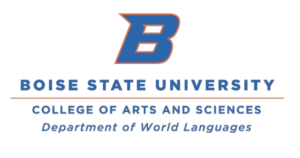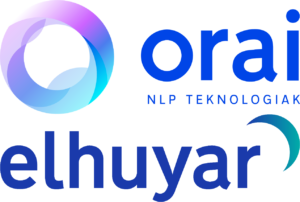ABOUT THE EUSKAL IRRATI TELEBISTA DOCUMENTARY PRESERVATION AND ACCESS PROJECT BY THE BASQUE MUSEUM & CULTURAL CENTER
In 2018, while conducting interviews with Basques in northeastern Montana, the Basque Museum’s Community History team members were shown pictures of a gathering that took place in 1991 of Basques from the Montana area with a photo/interview team from Euskal Irrati Telebista (eitb), Basque Public Television. Many of the Montana Basques interviewed for the documentary are now deceased. Patty Miller, Community History Project Director, recognized the lead for the documentary project, Ignazio Bizkarra, and contacted him to see if he would consider sharing a copy of the documentary with the Basque Museum. He then informed Ms. Miller that he had footage for 45 documentaries (some duplicates, but produced in Euskara and Spanish) that had been produced concerning various topics between 1991-2004 including stories of Basques from many western states. We are grateful to Euskal Irrati Telebista (eitb), which owns the copyright and provided the Basque Museum & Cultural Center with an agreement for the documentaries to be converted for preservation purposes, and to be housed at the Basque Museum. The documentaries are to be used strictly for educational purposes by the Basque Museum & Cultural Center. We are also indebted to Ignazio “Inaki” Bizkarra for his work as the producer for the documentaries, and for his continued commitment to having the stories preserved and shared with the public.

THE IDAHO STATE HISTORICAL RECORDS ADVISORY BOARD (Idaho SHRAB)
The Idaho State Historical Records Advisory Board (Idaho SHRAB) provides grants to support projects that preserve and increase online access to Idaho’s historical records; develops and promotes archival and records management best practices; and supports work that connects people to primary sources in their communities and online.
These grants are made possible by funds received from the National Historical Publications and Records Commission (NHPRC), which Idaho SHRAB is then able to re-grant to Idaho non-profit organizations 501(c)(3), state agencies, tribal, city and county governments.
In 2021, Idaho SHRAB awarded a grant totaling $3,000 to the Basque Museum & Cultural Center, Boise. This enabled the organization, with matching funds from the Idaho Heritage Trust, a donation in memory of Dolores Barroetabena Holbrook, and an in-kind donation from Ignazio Bizkarra, to convert the documentaries into a user-friendly format.
THE IDAHO HERITAGE TRUST The Idaho Heritage Trust preserves Idaho’s rich cultural history by providing grants and technical assistance to preservationists in every nook and cranny of the Gem State. Their grassroots efforts on behalf of all Idahoans honor the legacy of our ancestors, enrich our present, and ensure our collective heritage will be enjoyed for generations to come.
Translations and Subtitles courtesy of Nere Lete (M.F.A.)
In the spring of 2023, Nere Lete, Professor of Basque in the World Languages Department at Boise State University, completed translations of a select number of documentaries. These translations were then used to create English, Spanish, and Basque subtitles for each of the chosen documentaries, allowing us to make our content accessible to a wider audience. Professor Lete’s work was made possible with support from Boise State University, Elhuyar Fundazioa, Dr. Igor Leturia, Etxepare Euskal Institutua and the Eloise Garmendia Bieter Chair in Basque Studies.



Filmed in 1991. Interviews are with original Basque immigrants who came to the United States between the late 1910s and the early 1920s. Most were ninety years of age when interviewed.
Filmed in 1992. This series narrates the beginning of Basque immigration to the West of the United States after the Gold Rush in 1849 (Note: There were Basques who arrived in present-day California 200-300 years before this).
[Copyright: Euskal Irrati Telebista – ©eitb 1994; Length: 57 minutes; Language: English].